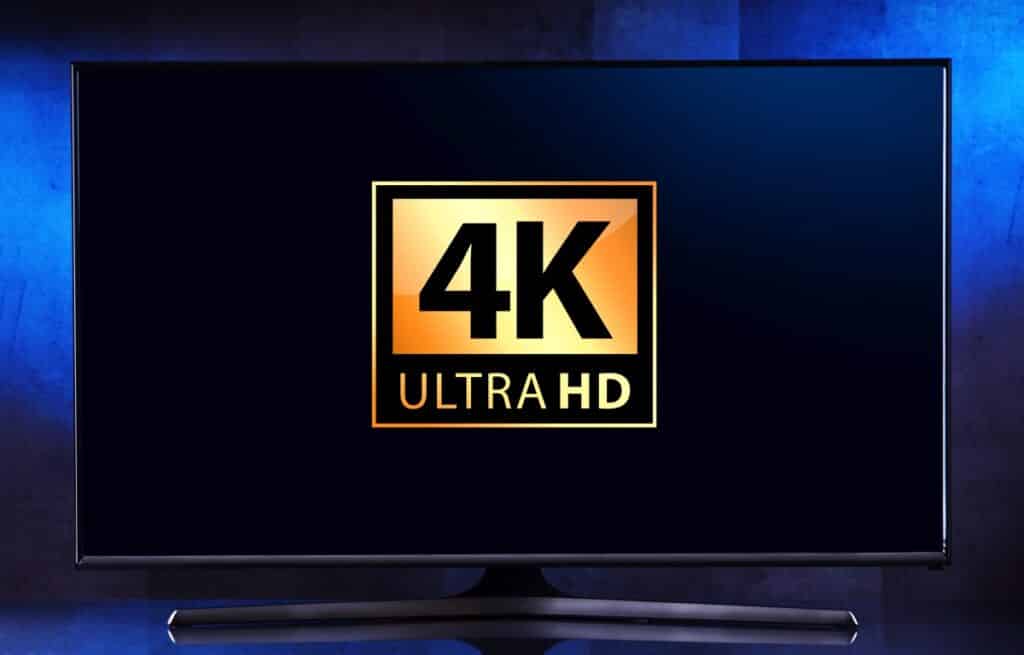the essentials in brief
HD (High Definition) offers a Resolution of 1920×1080 pixels, UHD four times higher resolution of 3840×2160 pixels. So UHD offers even more sharpness and detail. You can find out more here.
UHD currently offers the best video quality for consumers. With a higher resolution and a wider color spectrum, UHD enables an even more intense viewing experience. Read more here.
To fully enjoy UHD content, a UHD-capable TV or monitor and UHD-quality content are required. You can find out what else you need here.
In this article, we dedicate ourselves to the fascinating topic Ultra High Definition (UHD). We'll give you one detailed insight into the world of high-resolution video technology and explain what makes UHD special. You will learn why UHD is relevant, how it is revolutionizing the viewing experience and what requirements you have to meet in order to be able to enjoy UHD content in its full glory. Let's dive into the future of vision together!
Contents
The Evolution of Resolution: From SD to HD to UHD
In the world of visual experience, the resolution of screens and monitors has steadily evolved over the years. We take a look at the exciting Evolution from SD to HD to UHD and show why UHD is the ultimate picture quality.

1. SD (Standard Definition): The beginning of an era
When Standard Definition (SD) emerged in the 1990s, television screens and monitors were limited to 480i or 576i resolution. Image quality was better than older analog systems, but far from sharp in detail.
2. HD (High Definition): A new era is dawning
That all changed with the advent of High Definition (HD) in the early 2000s. HD offered a much higher resolution of 1920×1080 pixels, four times as many pixels as SD. This enabled sharper images to be displayed with finer detail and improved clarity. Movies, TV shows and games have become more realistic and immersive.
3. UHD (Ultra High Definition): The pinnacle of resolution
Today we are at the forefront of resolution with Ultra High Definition (UHD) or 4K. UHD offers a resolution of 3840×2160 pixels, which is four times as many pixel as with HD. As a result, images are displayed with unprecedented detail and sharpness. Every detail, no matter how small, is recognizable and the image quality is closer to reality than ever before.
Attention: Watch out for that optimal viewing distance: UHD TVs offer a higher level of detail due to the higher resolution. However, in order to exploit the full potential of UHD resolution, it is important to maintain the optimal viewing distance.
UHD in focus: The advantages and potential limitations of Ultra High Definition
For a comprehensive overview of the Pros and cons of UHD we have created a table showing the most important aspects:
What do you need to watch UHD content? A step-by-step guide
To UHD content to be enjoyed in all its glory, you need some Requirements fulfill. Here is a step-by-step guide showing you what you need to be able to watch UHD content:

Step 1: UHD capable playback device
Get a UHD-capable playback device such as a UHD television, a UHDBlu-rayplayer or a UHD streaming device. Make sure the device supports UHD content and has the necessary connections (e.g. HDMI 2.0).
Step 2: UHD content
Make sure you have UHD content. This can be UHD Blu-rays, UHD streaming services or downloaded UHD videos. Make sure that the content is in UHD quality so that you can use the full potential of your UHD-enabled device.
Step 3: Internet connection
If you want to enjoy UHD content via streaming services, a fast and stable internet connection is essential. Make sure your internet connection has enough bandwidth to allow uninterrupted UHD streaming. The recommended minimum speed is around 25 Mbps.
Tip: For a stable and reliable connection it is recommended to connect the UHD-capable player directly via Ethernet cable to connect to the router. This guarantees better bandwidth and reduces the chance of signal dropouts.
Step 4: HDMI Cable
Use high-quality HDMI cables to connect your UHD-capable player to your TV. Make sure that the HDMI cables meet the specifications required for UHD (e.g. HDMI 2.0 or higher) to ensure smooth transmission of the UHD signals.
Step 5: UHD settings
Check the settings of your UHD-enabled device. Make sure that you have chosen the correct resolution (e.g. 3840×2160 pixels) for UHD and that the image display is optimized for UHD. If necessary, adjust the color settings to achieve the best possible viewing experience.
Step 6: Audio Quality
To round off your UHD experience, you should also pay attention to the audio quality. Use a sound system or soundbar that is compatible with your UHD-enabled device and offers high-quality surround sound. After all, you don't just want razor-sharp images, you also want to enjoy impressive sound.
Note: Pay attention to sufficient storage space: UHD content requires more storage space due to the higher resolution. Check if there is enough space on your devices or external hard drives to save or download UHD content. If necessary, you should consider memory expansions.
UHD vs 4K: Understand the difference and similarities
The terms UHD and 4K are often used interchangeably synonym used but there is a subtle difference between them. UHD refers to one Resolution of 3840×2160 pixels, while 4K Resolution of 4096×2160 pixels designated. In practice, however, the two terms are often used interchangeably Most consumers will not notice the difference at a hunt.

key fact box
4K met in the film industry specific requirements and has a higher resolution than UHD. This technical precision is used to take the visual quality of films to an even higher level and to offer an impressive cinematic experience.
UHD - The future of viewing pleasure
UHD (Ultra High Definition) offers with its exceptional image sharpness and the extended color spectrum a First class viewing experience. Films, series and games are displayed pin-sharp down to the smallest detail, making them appear more lively and realistic. Prerequisites for enjoying UHD content are a UHD-capable playback device, high-quality UHD content and a stable internet connection
Sources
https://praxistipps.chip.de/wqhd-vs-4k-im-vergleich-das-sind-die-unterschiede_51883

